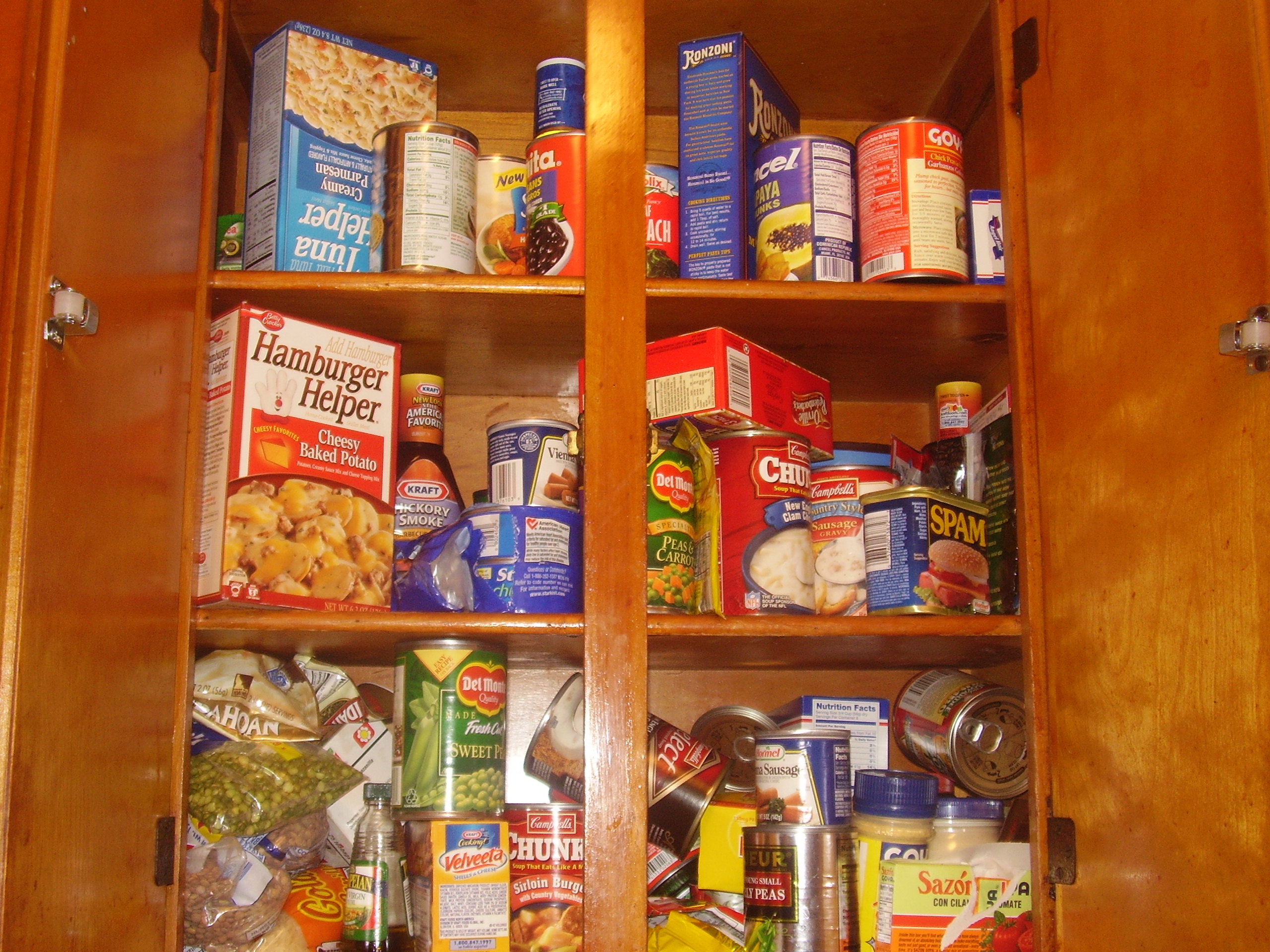
10 Foods You Should Store In Your RV And Why
With winter on the way, many of us tend to want to squirrel away food for those long, snowy days. This tendency can also benefit us while we are traveling in our RVs.
Storing non-perishable, shelf-stable pantry foods in our campers not only satisfies that inner rodent, but it can be really helpful to have that food later down the road.
One simple reason for keeping food in a camper is that you may end up in a location that has a very limited supply of just about everything. What if you are boondocking in the middle of the desert or in a tiny town with only one convenience store full of junk food?
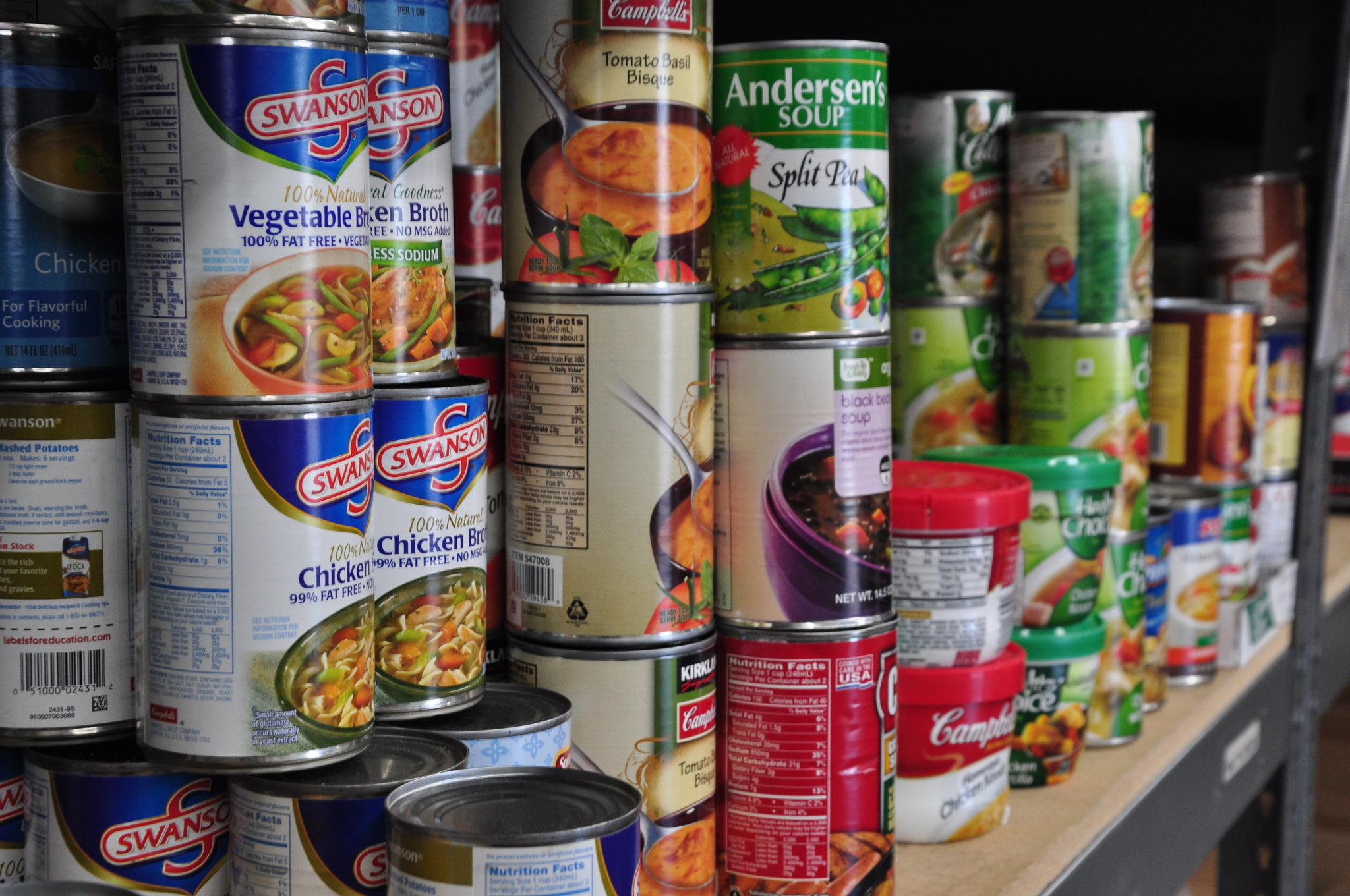
Having a supply of your favorite pantry foods can keep both hunger and costs down. Another reason to keep food close at hand is that it is just more convenient.
Say you are running low on groceries and have been driving all day. You are not going to have the energy to do some shopping or even a lot of cooking. It’s easiest to pull into camp and grab a few of your favorite soups, rice packets, or canned veggies, chow down and then hit the sack. In addition, these types of pantry foods can work together for those impromptu campground potlucks.
These 10 pantry foods are not only lightweight, tasty, and inexpensive, but they store for at least a year. They also don’t require that much prep work or time to cook.
In addition, to keep these foods even longer, store them in plastic containers inside your RV to keep out insects and rodents. As for storage options, look around your particular rig for those hidden areas under the bed, under the passenger seat, in the bottom of a closet, or even in the bathtub.
1. Olive oil
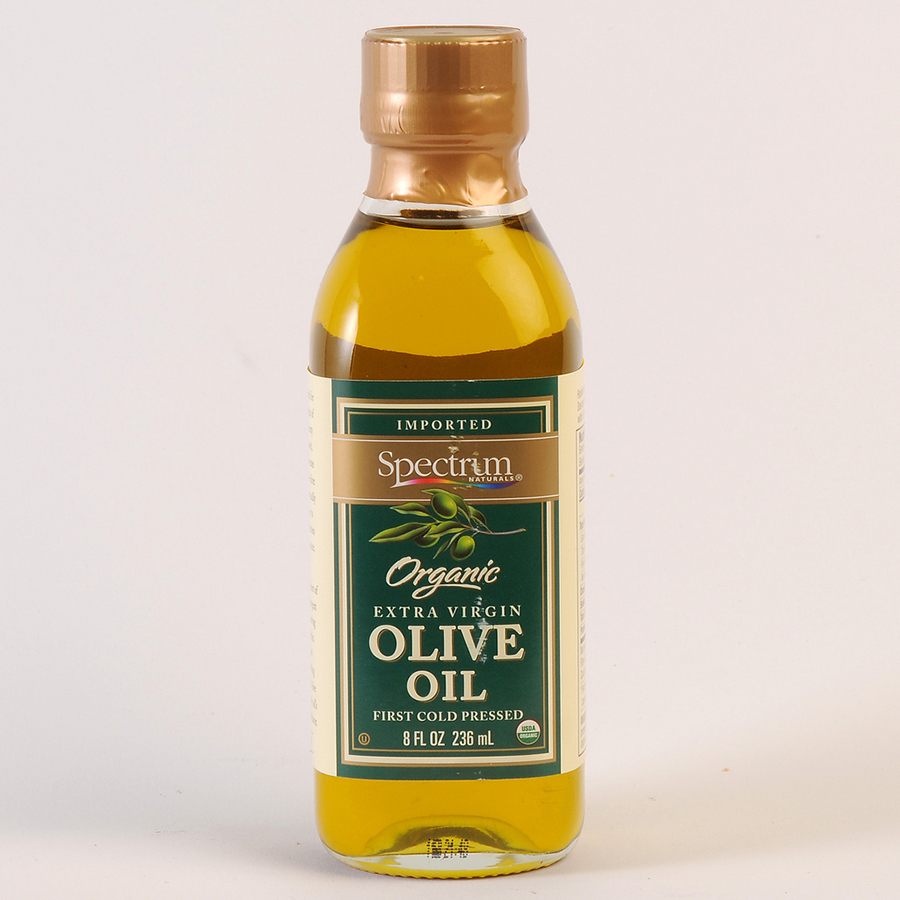
Any food tastes better with some fat and olive oil is some of the healthiest. Olive oil can be stored longer than other oils and lasts for nearly two years if you keep it away from high heat, air, and light.
Coconut oil is another good substitute that is long-lasting. Coconut will harden in cold weather and be loose in hot weather while not affecting the taste.
2. Canned beans
Every long-term food storage box should include canned beans. Not only are they easy to open and prepare, but they are also extremely good for you with high levels of protein, iron, and magnesium.
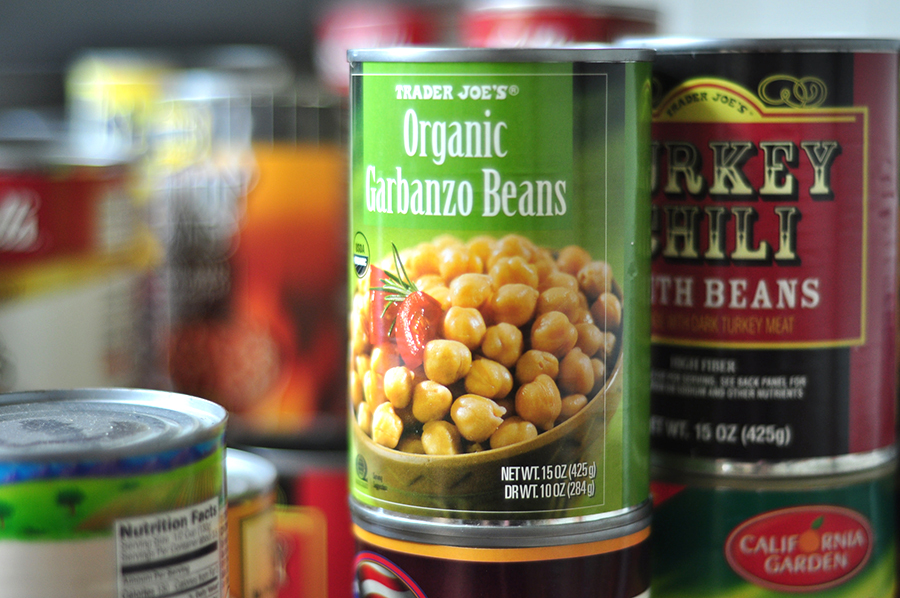
However, the type of bean is important for storage time. Canned beans that tend to be best for long-term storage are garbanzo beans (chickpeas), pinto beans, black-eyed beans, and lima beans.
Unfortunately, canned beans and other canned vegetables are very heavy. Keep your supply to a minimum if you are worried about towing around the extra weight.
3. Pasta and sauce
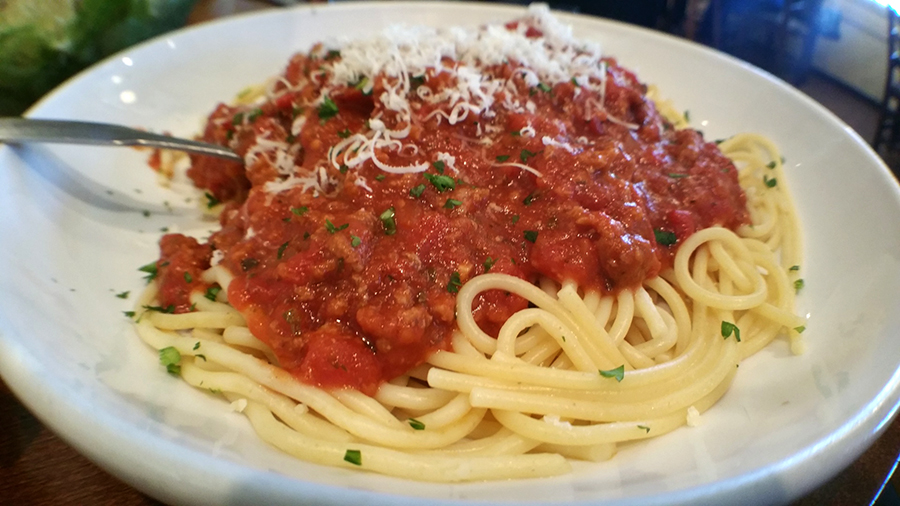
Another storage basic, pasta is usually on everyone’s favorite food list—especially children’s. The typical pasta and sauce dish only takes about 20 minutes to make and is a warm comfort meal in any situation.
Packages of spaghetti and angel hair pasta take up less room than boxes of penne or elbow macaroni and some sauces come in packets rather than jars. Dried pasta can last for about one to two years in storage.
For another quick option, pick up a few boxes of flavored couscous. This tiny pasta can be cooked in about 10 minutes and mixed with a variety of sauces, meats, and beans.
4. Powdered milk
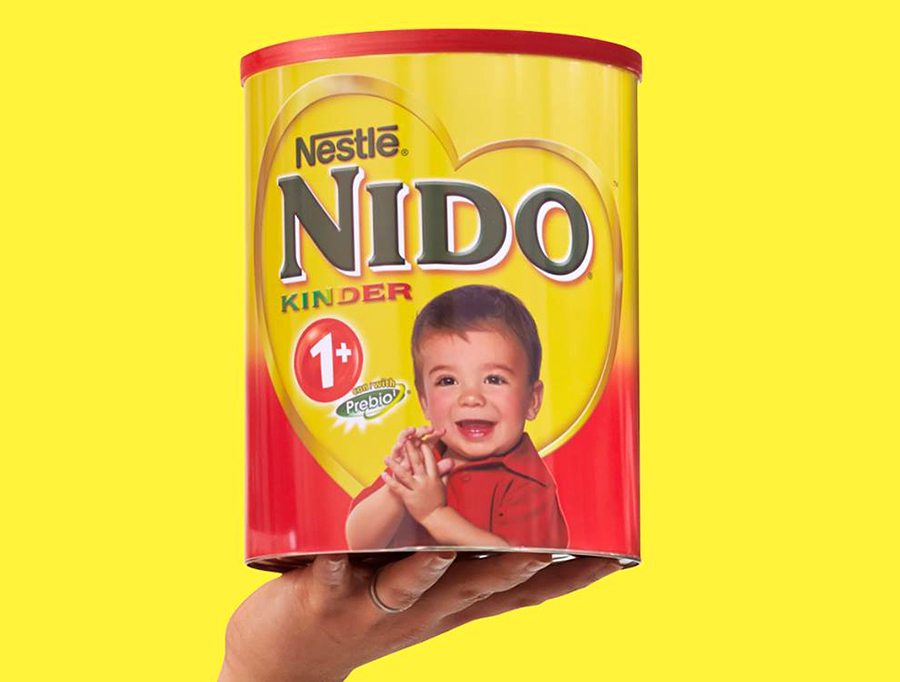
Avid backpackers know the value of powdered milk. This powdery substance (not to be confused with powdered coffee creamer) is extremely lightweight and can be used in everything from coffee to soups. Use powdered milk to thicken and add flavor to pasta dishes, oatmeal, and gravy. You can even get wild and make milk with it.
5. Canned tuna
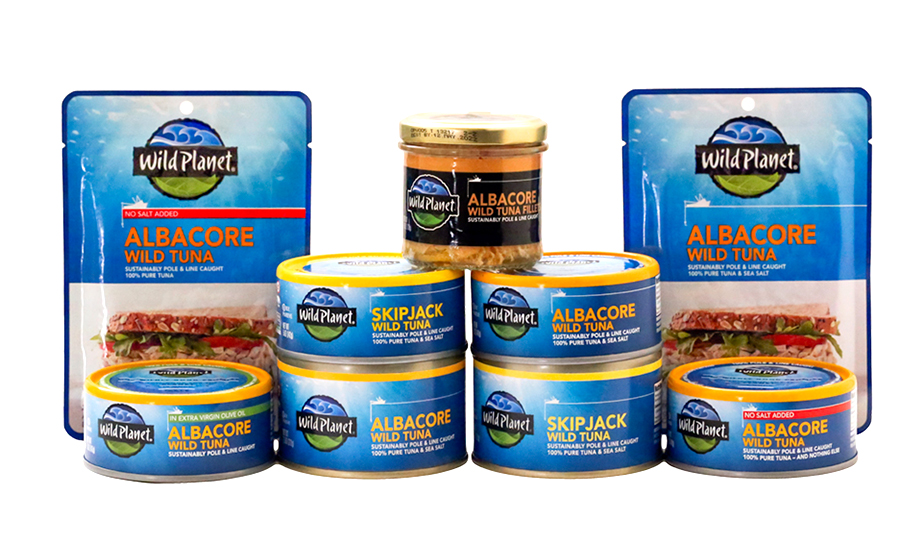
Tuna is another canned basic that can last up to five years in storage. Not only is canned tuna inexpensive and tasty, but it is full of omega-3 fatty acids and protein.
Tuna also comes in smaller cans, so you can store quite a few of them for impromptu lunches or late-night pasta and tuna dishes. For more taste and heart-healthy fats, get the tuna packed in soybean oil rather than water.
For some variety, companies like Wild Planet also carry canned salmon, sardines, and chicken.
6. Tasty Bite
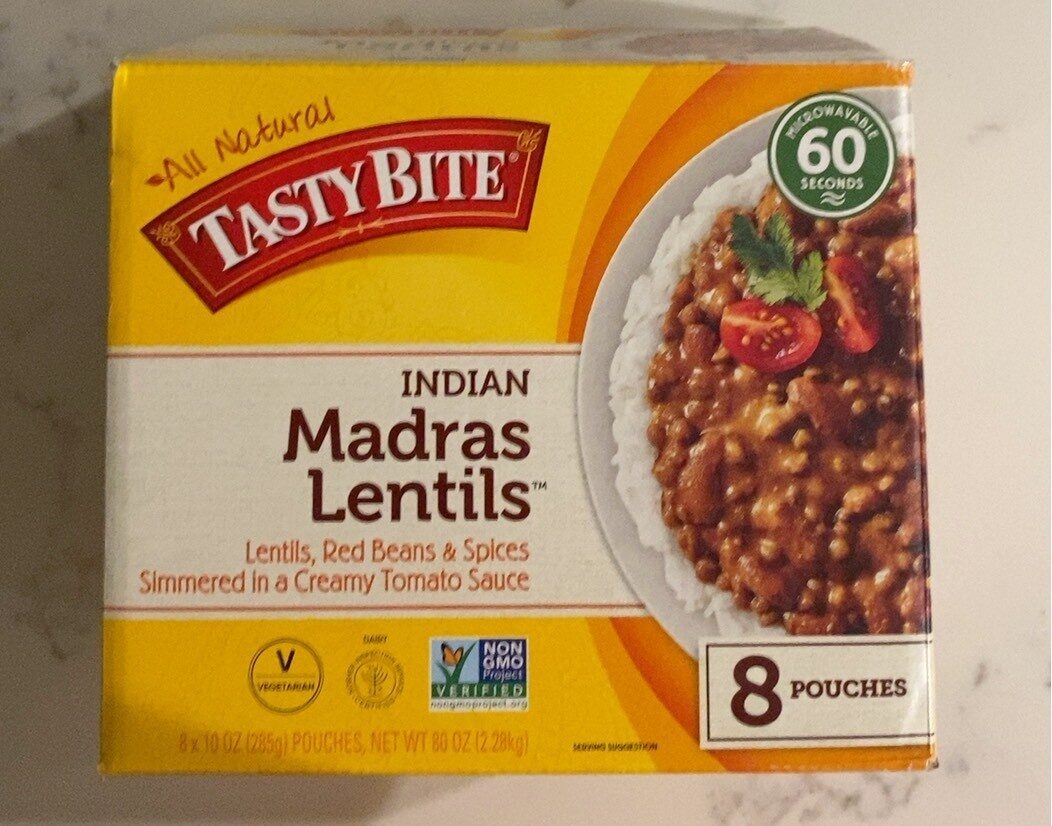
If you need a little spice in your RV life, the Tasty Bite ethnic meals are a light, convenient option. Known to be a tent camping and Burning Man basic, these packets come in many flavors like Coconut Vegetables, Madras Lentils, and Bombay Potatoes. Tasty Bite even sells pre-cooked rice packets and sauces that make cooking even quicker.
7. Boxed soup
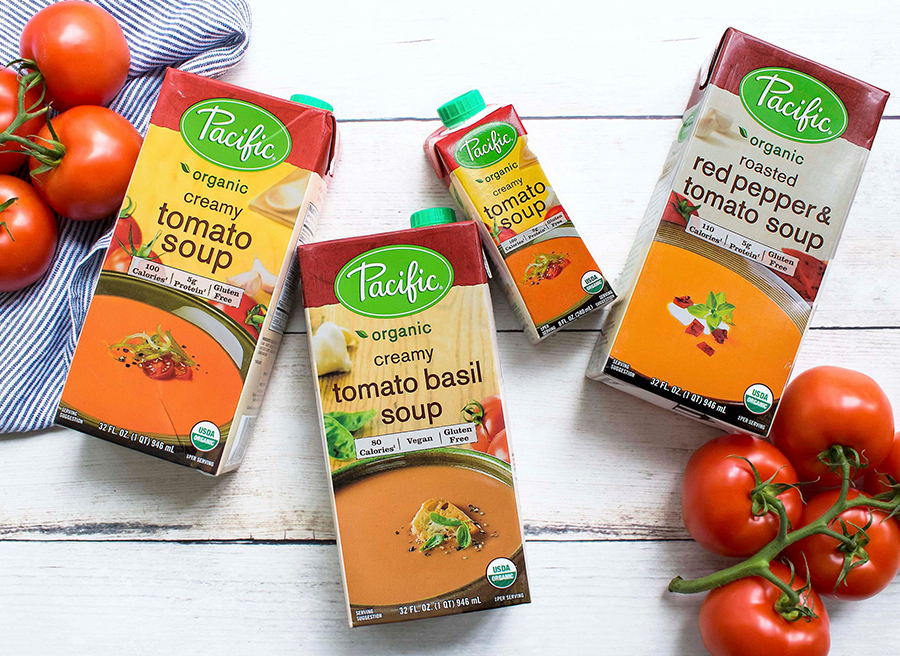
Canned soup is usually in every home pantry, but boxed soups are more convenient for the RVer. The reason for this is that canned soups typically have high amounts of sodium and the cans do have harmful BPA linings.
Boxed soups like the ones from Pacific Foods have lower sodium and no additives. The boxes also store better and are lighter than cans. The Red Pepper & Tomato Soup is especially tasty.
8. Rice
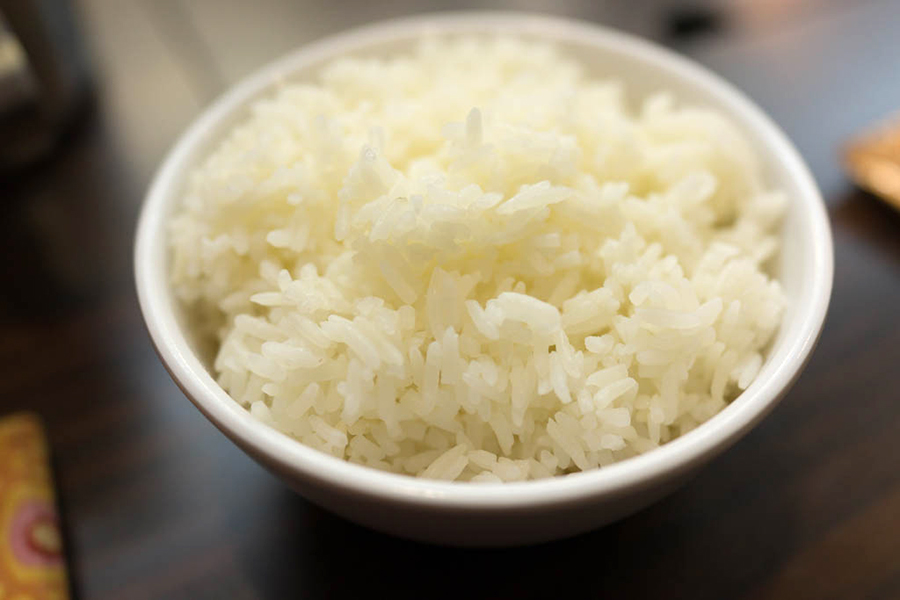
Rice is one of those basic ingredients that can be used for so many dishes. It does take longer to cook compared to other packaged foods, but a package of rice can be stored for four to five years. Rice can be mixed with just about everything on this list and is lightweight, tasty, and filling.
9. Grilled and packaged chicken
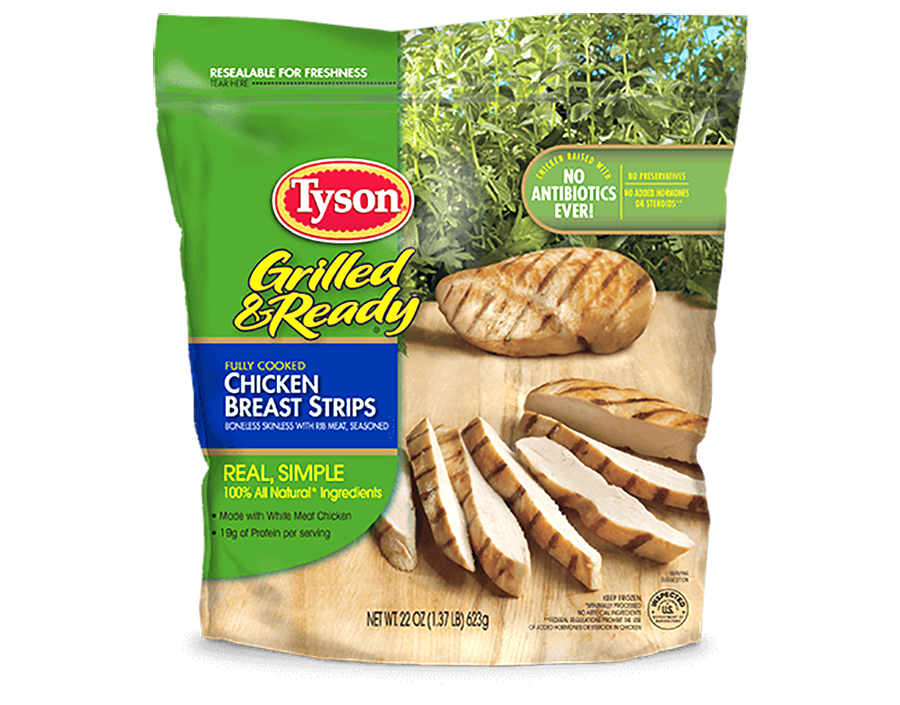
While I was on a 50-mile backpack trip, lightweight packaged chicken was a very welcome and delicious addition to otherwise bland camping food packets. The pre-grilled, pre-cut chicken has a ton of flavor and adds protein to any meal.
Unfortunately, this one ingredient does have more additives than other foods and may not taste like the real, fresh thing. However, these packages are easy to store and keep for at least a year for very quick prepping and cooking.
10. Coffee, tea, and your favorite vintage

Camping is always better when you have your favorite beverage along. The best storable drinks are, of course, coffee, tea, and wine. Coffee and tea can be stored for about a year, but coffee keeps its flavor best when in an airtight container.
Bottles of wine can be stored for years, but the wine will be affected by temperatures over 70 degrees F. If you are in doubt, it’s best to just drink it up.

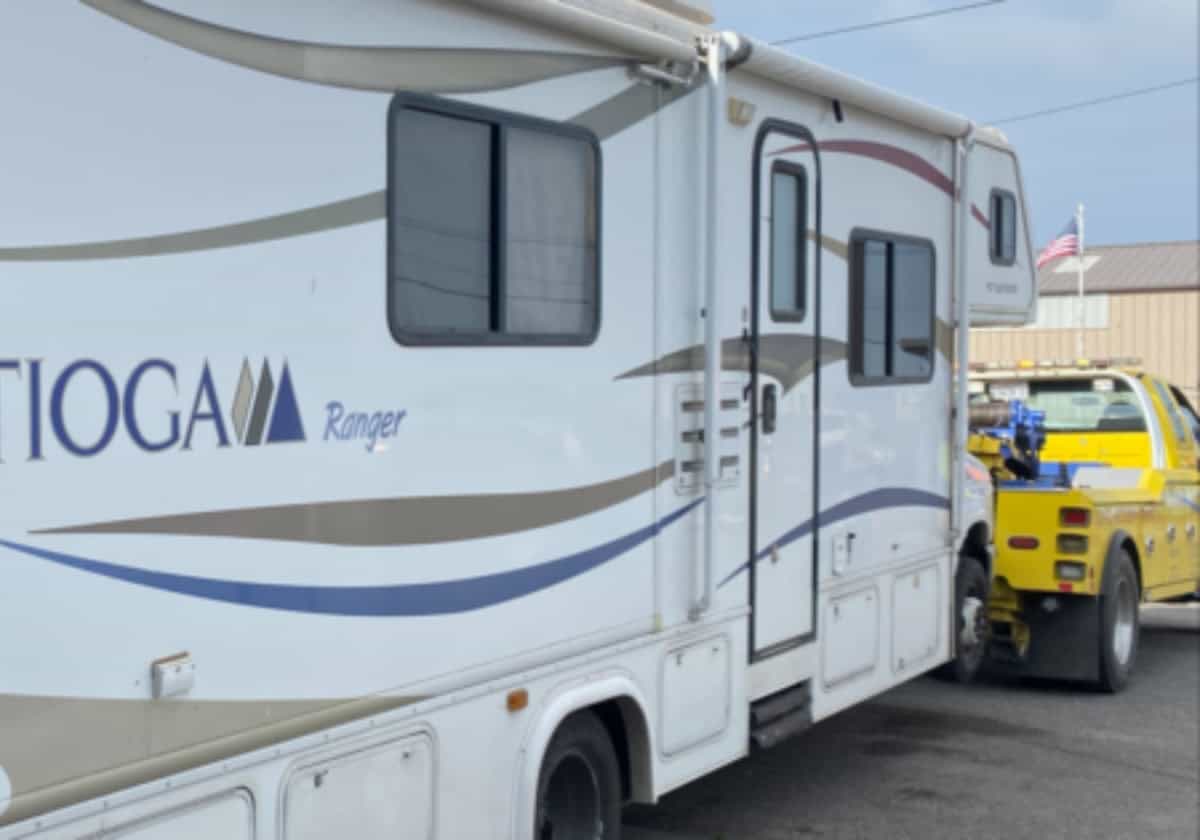
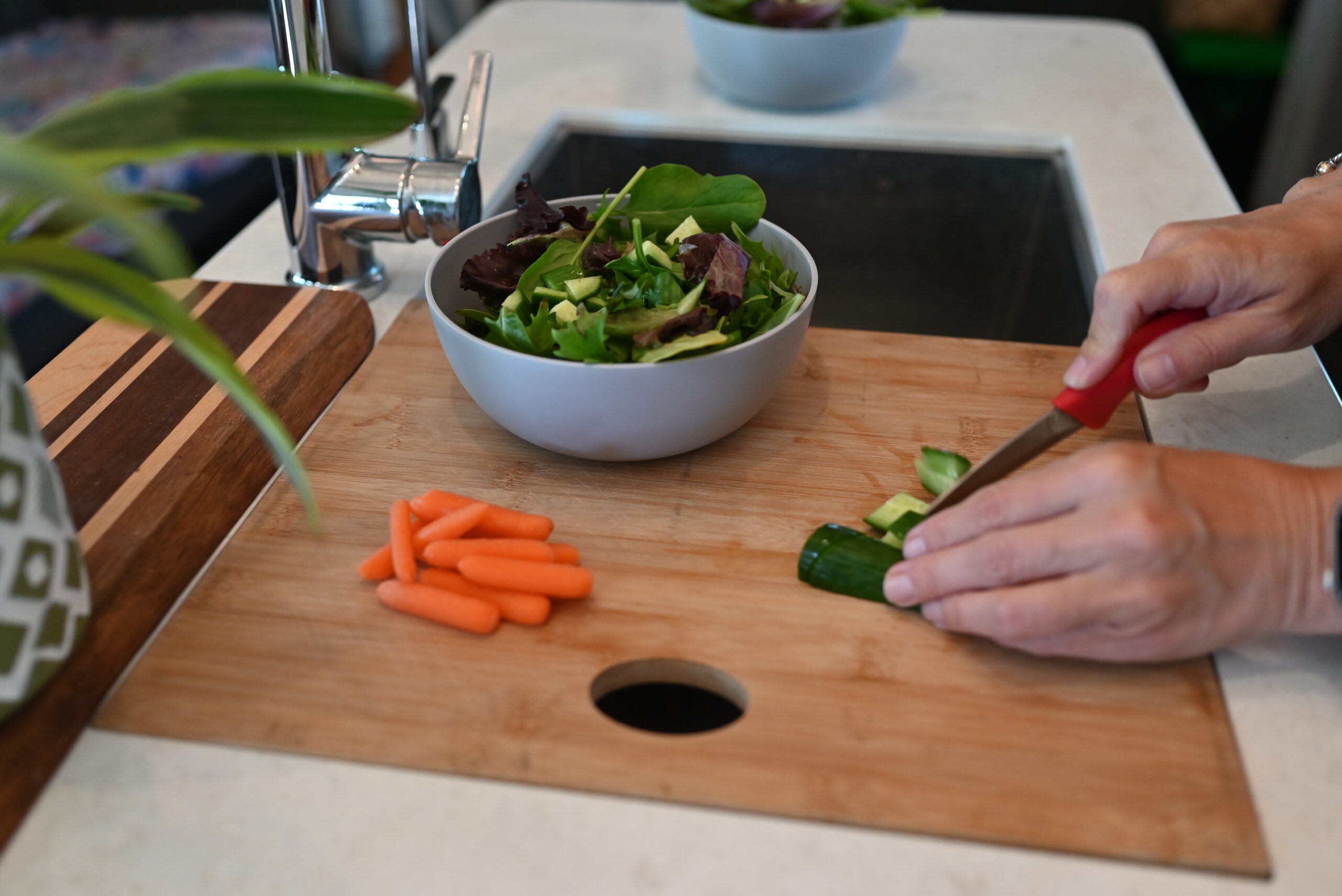
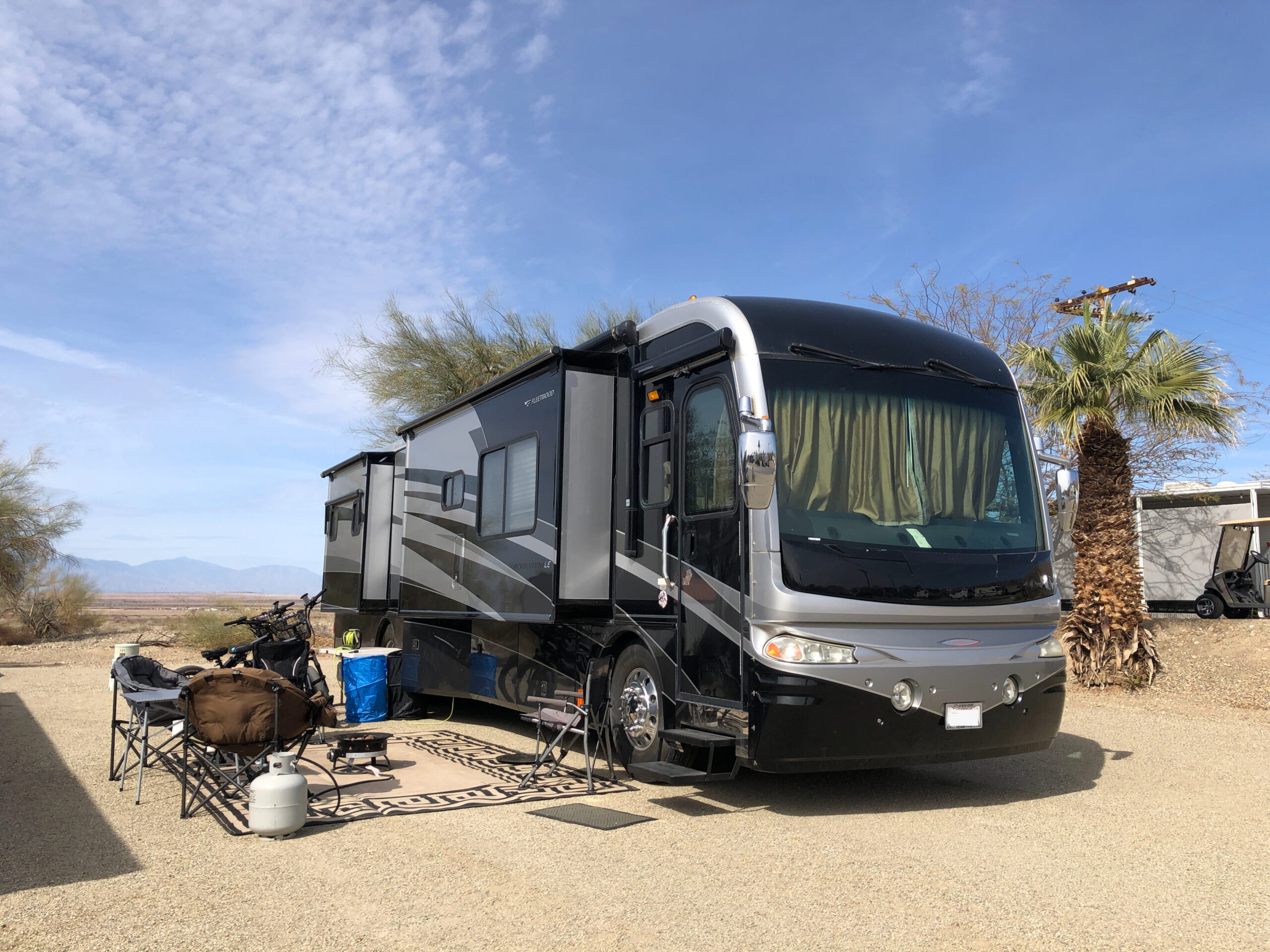
We never use plastic to store semi- and non-perishable foods. The reason is that plastic has so many chemical that outgas, or precipitate onto the food. Additionally even metalized bags let air and water through. We use glass jars. Our favorite is the gallon size pickle jars. We use them for storing cereals, snacks, etc. On time I left a jar filled with Cheetos in the rv over the summer. Surprisingly they were still good in the fall. Besides rats can’t get through the glass and metal tops.
I also stock boxed Scalloped potatoes, Pasta Roni, Rice a Roni and Knorr packages of instant rice mixes, Heinz jars of gravy also packages of instant gravy, Instant mashed potatoes, Packages of Oatmeal, Shelf stable plant milks, canned tomatoes, canned chicken, and Instant Brown Rice, are just a few items that I stock in my TT at all times.
I find that it is cheaper to have bought these item at the discount stores at home rather than to buy over priced items in small town grocery stores or no grocery stores when we dry camp.
We are snow birds and have a 30 foot TT when we left for Arizona this year between the refrigerator which is the small size, the freezer department and my storage cupboards I had more than a month of meals. This just left fresh items that I might want.
I have never had a problem with mice or other pests getting into any of my food items, perhaps I have just been lucky.
Happy Camping.
I not consider some of these items to be on the nutritional best foods list, so when possible I cook very healthy.
You really should not keep food in your RV when not in use. It attracts rodents and should not be subjected to freezing or overheating on the summer. I have some covered plastic tubs that I keep in my home pantry that are stocked and convenient to grab and go. I also have a check list that I print before each trip so that when we pack we do not forget essential items.
Spot on. I’m a frugal urban stealth camper, 20 ft. Class C. I use all items you mentioned, except I buy boxed milk instead of Powdered: keeps for months. Dollar stores will occasionally have high end items like the Tasty Bites, so I stock up when possible.
Have learned to make many one pan meals.
Recommend being open to non-traditional foods such as ethnic. Refriied beans in a pouch are one of my staples.
Stay healthy
Dave